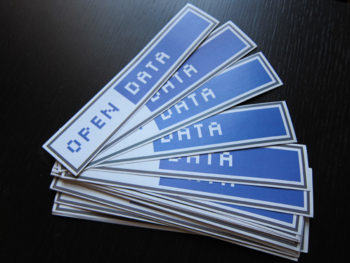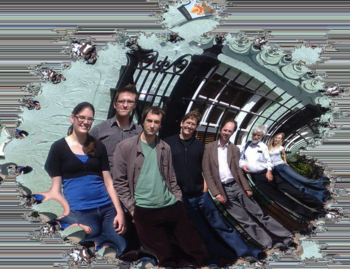Panton Principles: Difference between revisions
imported>Daniel Mietchen m (image legend) |
imported>Daniel Mietchen m (→Background) |
||
| Line 14: | Line 14: | ||
}}</ref> | }}</ref> | ||
Once some [[scientific data]] were released into the [[public domain|Public Domain]], any reuse or modifications are permitted. With legal claims to the source being waved to the maximal extent possible, [[community | Once some [[scientific data]] were released into the [[public domain|Public Domain]], any reuse or modifications are permitted. With legal claims to the source being waved to the maximal extent possible, [[community norm]]s are invoked for usage guidance, the most essential ones within the scientific community being proper attribution as well as documentation of any further processing. | ||
The name ''Panton Principles'' is derived from the [[Panton Arms]] pub in [[Cambridge, U.K.|Cambridge]], [[United Kingdom|UK]], which was the location where the principles were originally drafted, starting in June 2009, primarily by [[Peter Murray-Rust]], [[Cameron Neylon]], [[Rufus Pollock]] and [[John Wilbanks]]. The Panton Principles were officially released for public signatures in February 2010. | The name ''Panton Principles'' is derived from the [[Panton Arms]] pub in [[Cambridge, U.K.|Cambridge]], [[United Kingdom|UK]], which was the location where the principles were originally drafted, starting in June 2009, primarily by [[Peter Murray-Rust]], [[Cameron Neylon]], [[Rufus Pollock]] and [[John Wilbanks]]. The Panton Principles were officially released for public signatures in February 2010. | ||
Revision as of 07:04, 19 August 2010

The essence of the Panton Principles: "publicly funded science data should be in the public domain, full stop"[1] — and clearly labeled as such.
The Panton Principles for Open Data in Science (usually shortened to Panton Principles, sometimes abbreviated as PP) are a set of recommendations for scientists on a simple standard notification to be attached to scientific data that are released to the public.[2] The notification states, in effect, that other scientists can use and re-use these data without infringing copyrights. The idea is to promote sharing of scientific data, with the implied hope to accelerate and improve scientific research, stressing the principles of transparency and reproducibility. The Panton Principles apply once the decision to make the data public has been reached.
Background

Data sharing provides fertile ground for derivative work: This image is based on the original photo of the drafters of the Panton Principles in front of the Panton Arms pub and was obtained by mapping onto the Mandelbrot set. From right to left: Carolina Rossini, Peter Murray-Rust, Cameron Neylon, John Wilbanks, Rufus Pollock, Jordan Hatcher, Jenny Meyer.
Large and ever increasing amounts of scientific data are generated in the framework of scientific research projects, and scientific data in this narrow sense are the target of the Panton Principles, particularly if the underlying research has been funded from public sources. No clear standards existed, however, for how to label data for reuse, and this is the gap that the Panton Principles are meant to fill.[3]
Once some scientific data were released into the Public Domain, any reuse or modifications are permitted. With legal claims to the source being waved to the maximal extent possible, community norms are invoked for usage guidance, the most essential ones within the scientific community being proper attribution as well as documentation of any further processing.
The name Panton Principles is derived from the Panton Arms pub in Cambridge, UK, which was the location where the principles were originally drafted, starting in June 2009, primarily by Peter Murray-Rust, Cameron Neylon, Rufus Pollock and John Wilbanks. The Panton Principles were officially released for public signatures in February 2010.
References
- ↑ Reaching Agreement On The Public Domain For Science — blog post by John Wilbanks on the public launch of the principles, February 19, 2010
- ↑ Panton Principles — Principles for Open Data in Science (Homepage)
- ↑ Peter Murray-Rust. The Panton Principles: A breakthrough on data licensing for public science?, Unilever Cambridge Centre for Molecular Informatics, 2009-05-16. Retrieved on 2010-03-23.